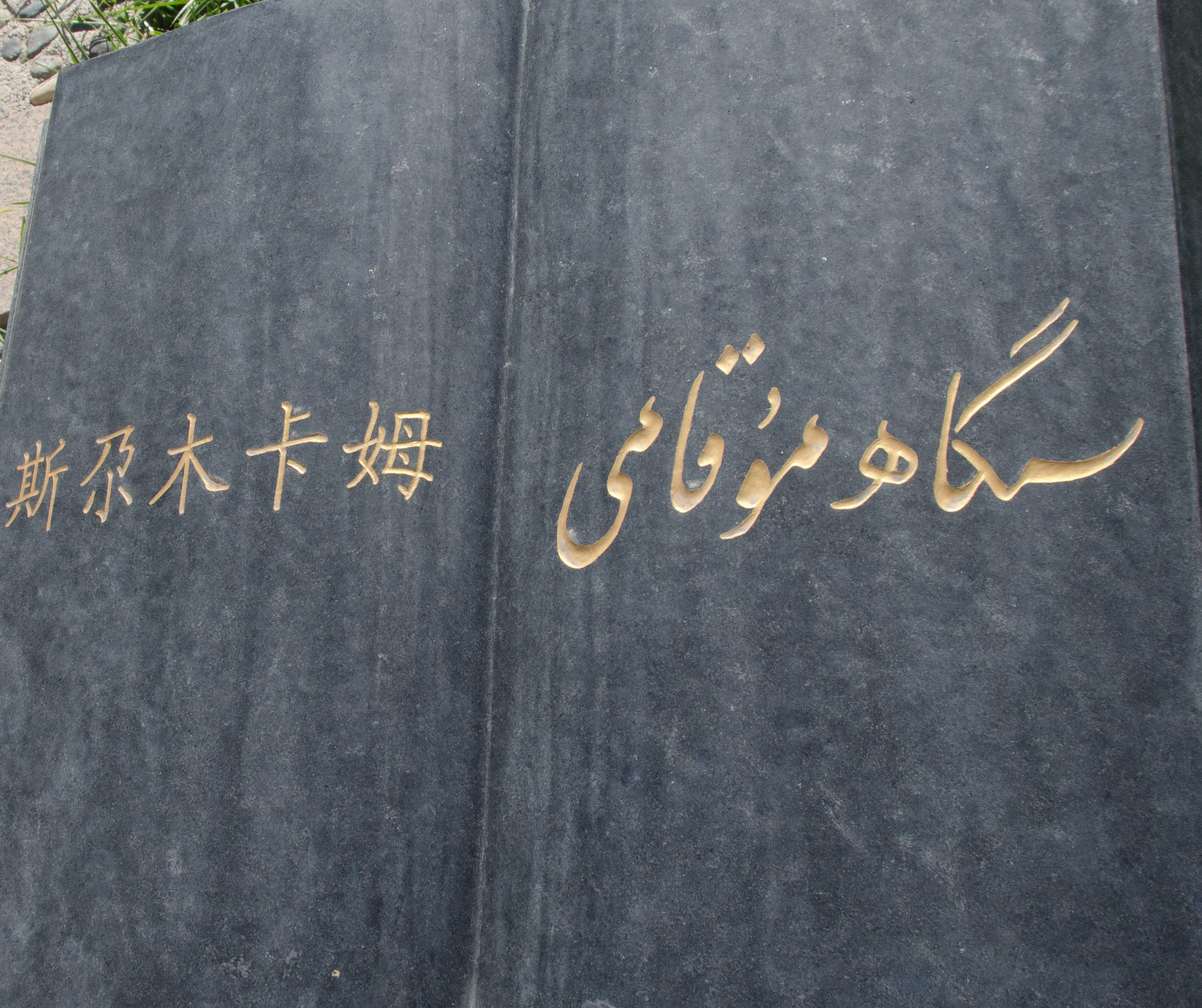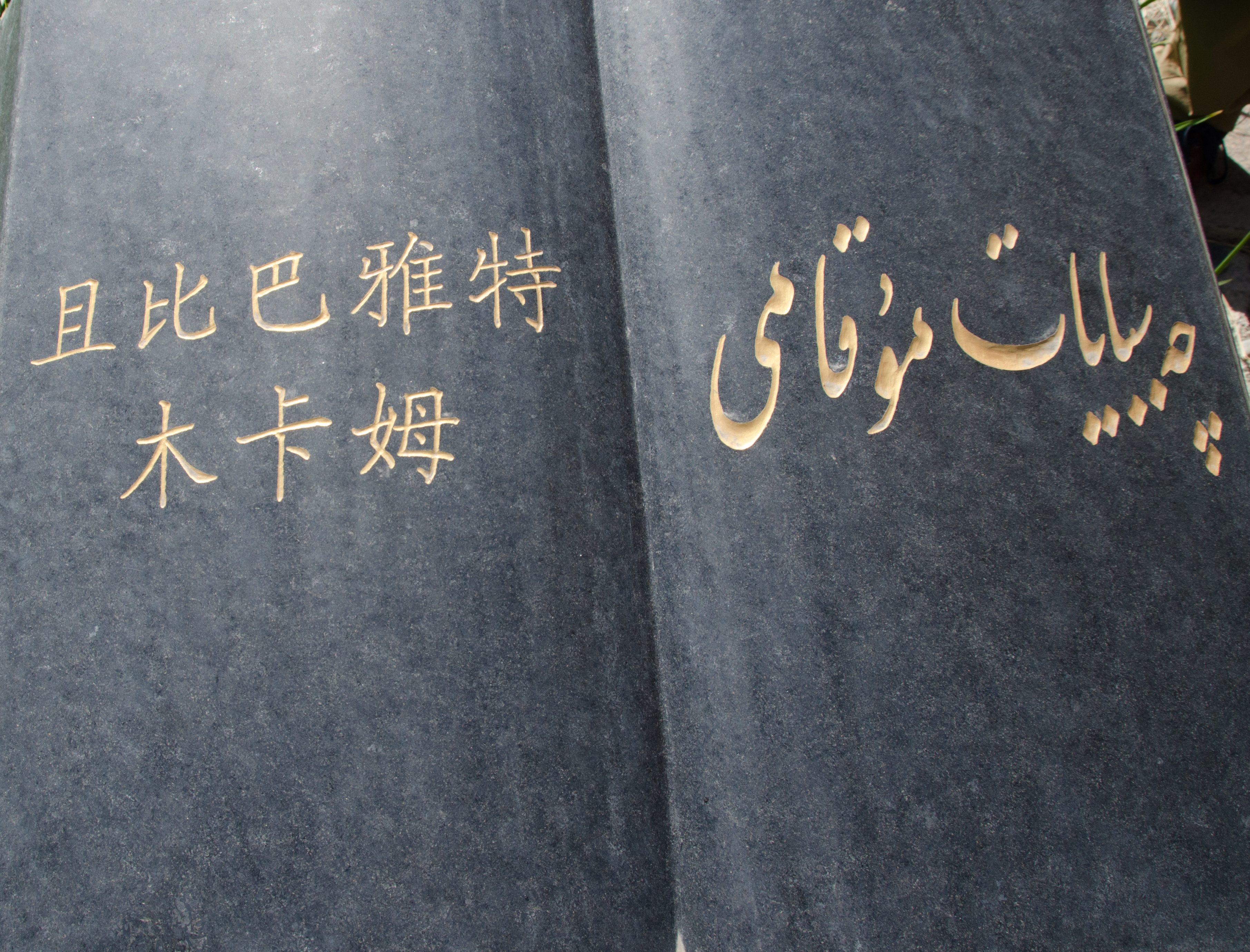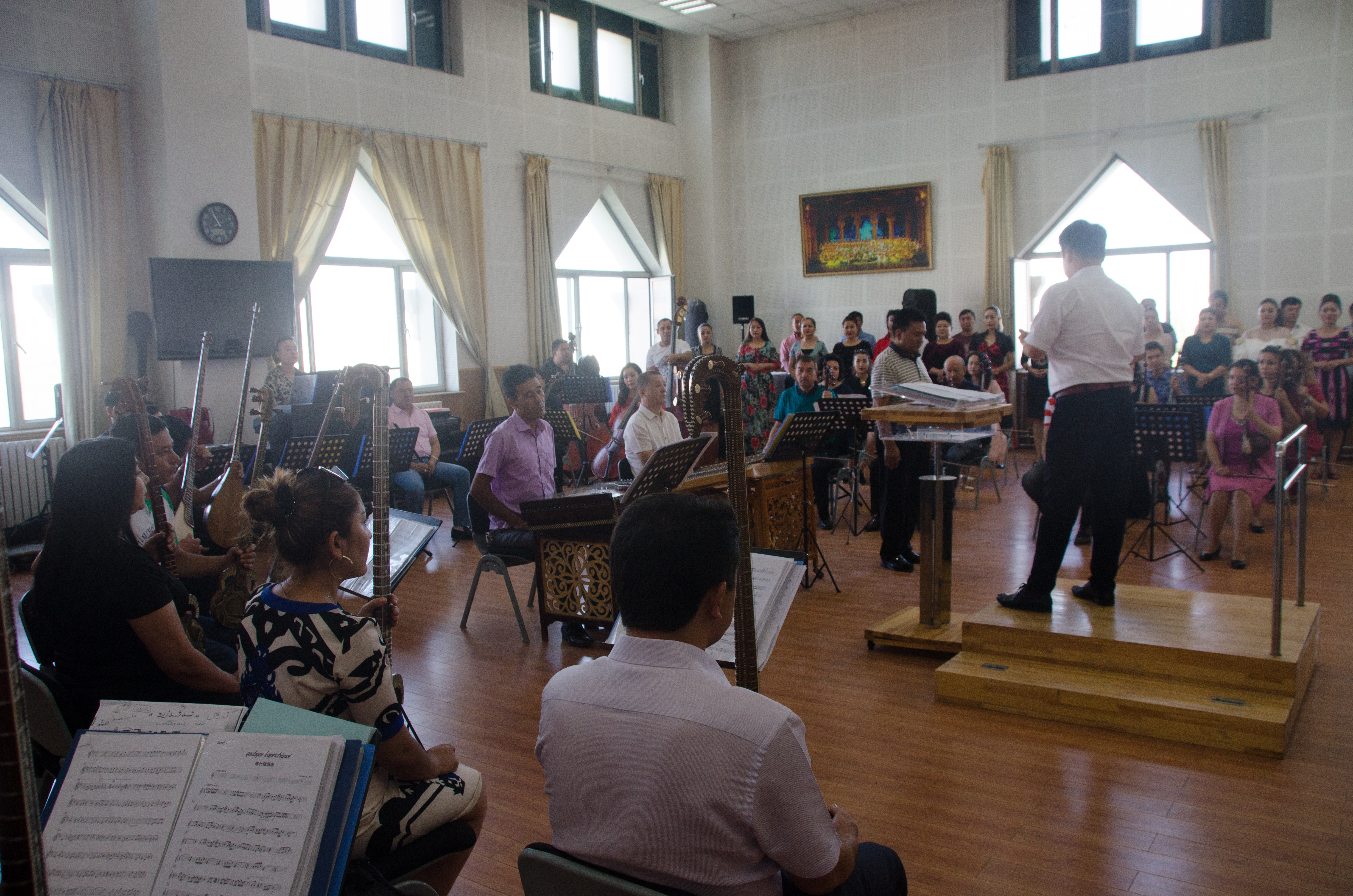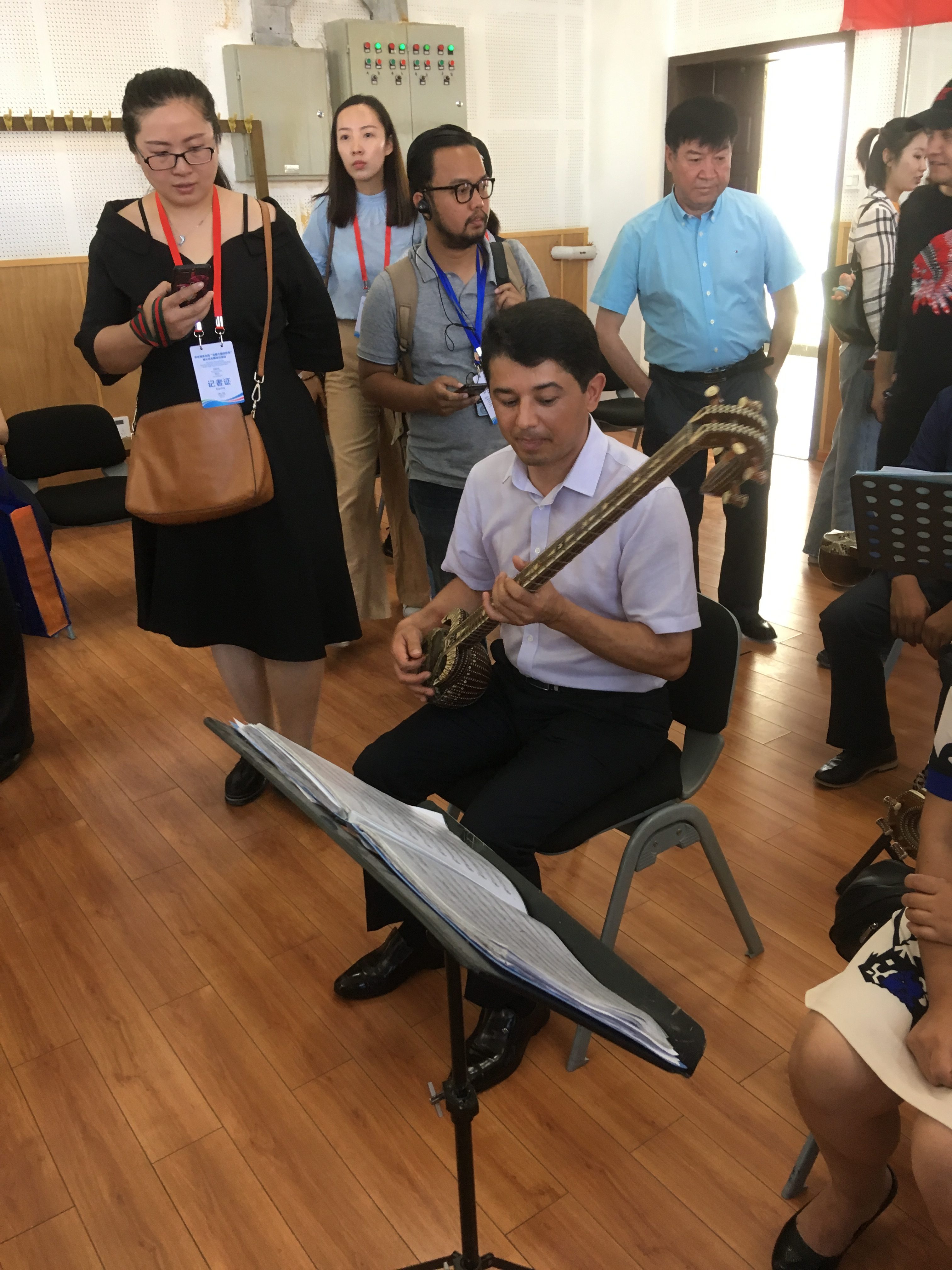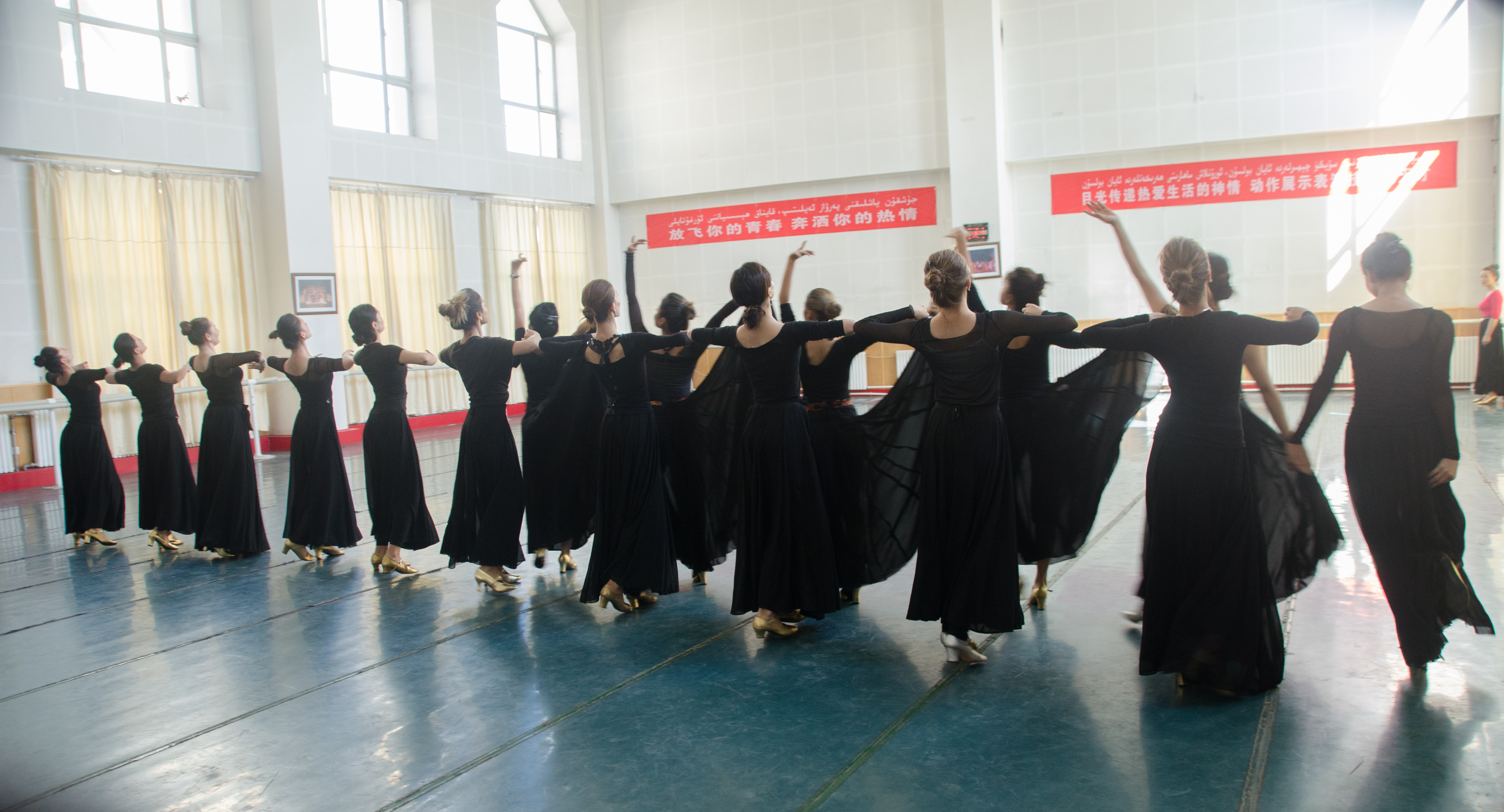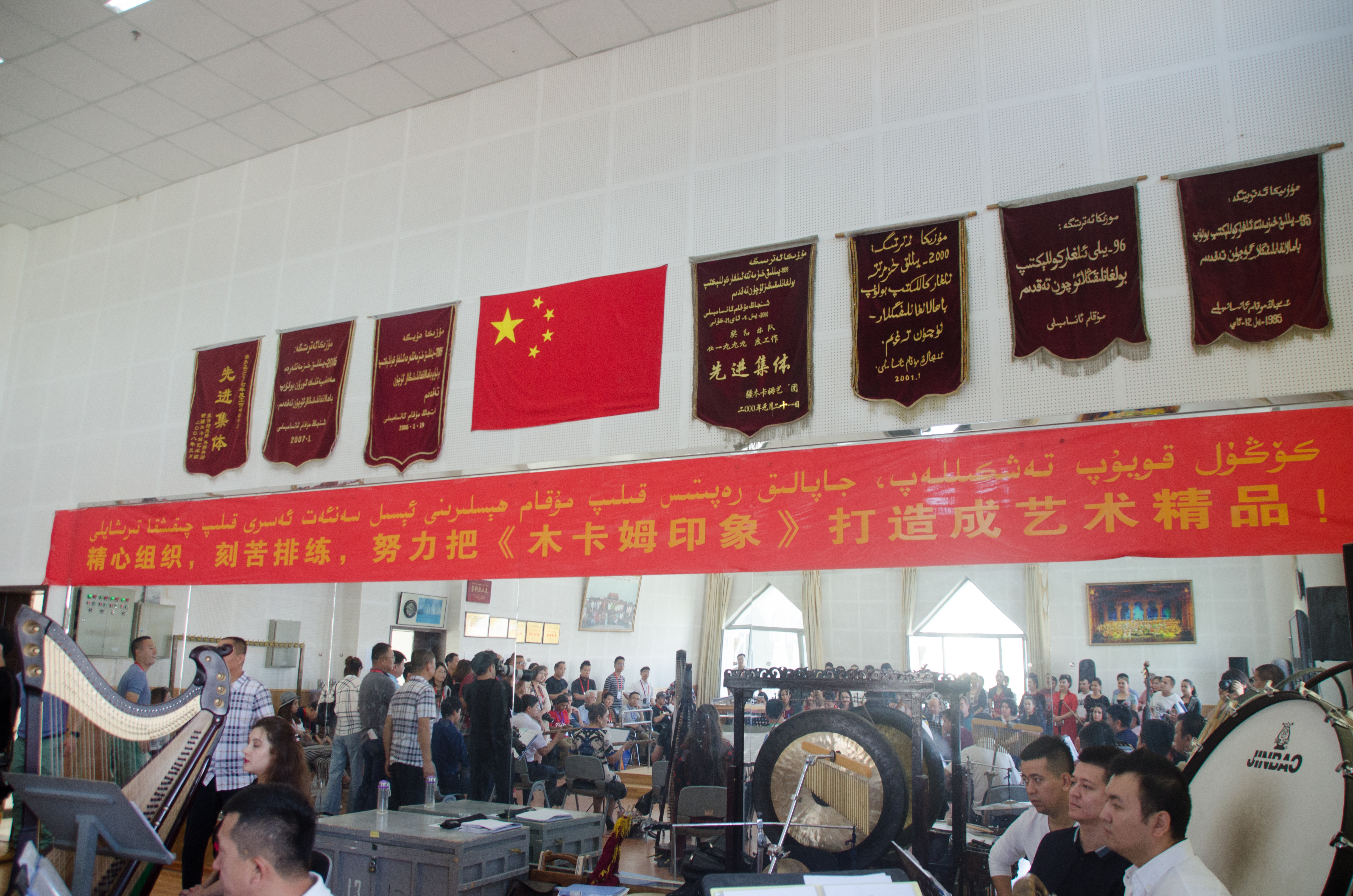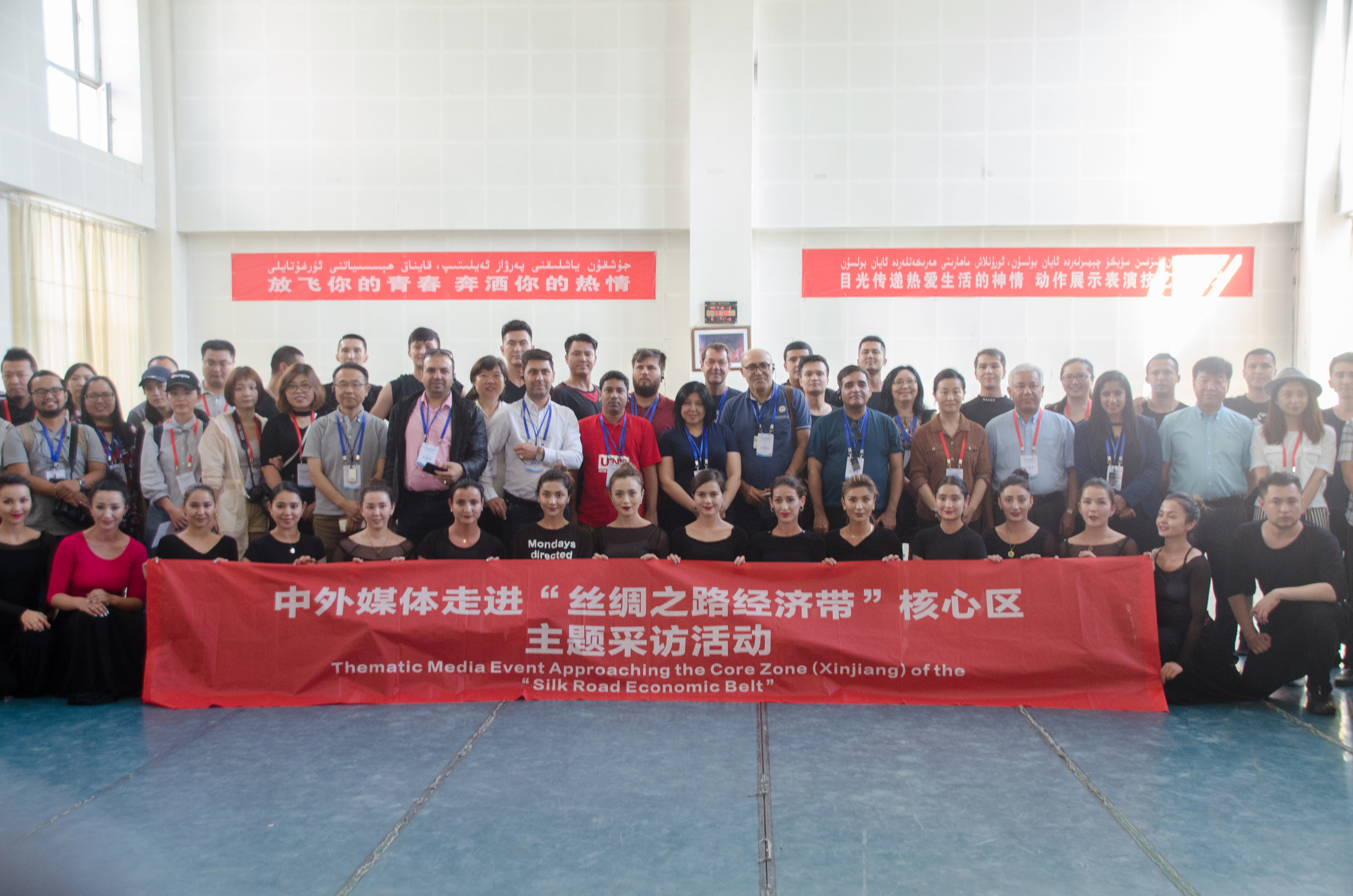By Xuefei Chen Axelsson
Urumqi, Aug. 26(Greenpost) – In Xinjiang Uygur Autonomous Region, there is such a grand oral culture treasure”Twelve Muqam”. What kind of classic work it is and how is it passed on? On August 26, more than 30 Chinese and foreign media reporters walked into the Xinjiang Muqam Art Theater to interview about the protection and inheritance of Muqam.
The theatre building with its strong artistic features is more beautiful against the blue sky and white clouds. Going into the yard, you can see a sculpture. It was the sculpture of Twelve Muqam’s inheritor, Turdi Ahong (1881-1956).
Qiao Siming, secretary of the Party Committee of Xinjiang Muqam Art Theatre, said that in the early days of liberation, an old man in Xinjiang called Turdi Ahong (1881-1956), was the only one who could play Twelve Muqam completely. Muqam is very large, with twelve sets, one set for two hours, all played down, it will take one day and one night. These twelve sets of tracks are all oral.
At that time, with the special care of Premier Zhou Enlai, experts were sent to record, to record and translate with the best recording equipment. Qiao Siming explained that Muqam originated from five or six hundred years ago, and Muqam means a set of songs. Twelve Muqam, which is relatively large, is mainly spread in southern Xinjiang. In addition to Twelve Muqam, there are Yili Muqam in Dongjiang and Turpan Muqam in Northern Xinjiang. Most of the words in the poems and philosophies, folk customs, and some love themes and scenes in social labor. After ten years, it was not until 1961 that it was all sorted out, and it has been published to date, and there have been published books and audio-visual products. In order to commemorate the old man’s contribution to the inheritance of Twelve Muqam, we specially created a statue for him. UNESCO has rated it as an intangible cultural heritage and refers to all Muqam. According to research, the earliest Muqam was sung in the ancient Mongolian language of Chaer, ancient Uyghur. Later, it was translated into Uyghur and then translated from Uyghur into Mandarin. This is a complicated process.
In 1989, in order to protect and pass on Twelve Muqam, the Central Government funded the establishment of the Xinjiang Muqam Art Theatre. In 2005, Muqam was named as a World Intangible Cultural Heritage by UNESCO. The intensity of protection, research and inheritance has been further increased.
He said that the Xinjiang Muqam Art Troupe is a state-owned unit, the government budget, and often goes abroad. They have visited more than 100 countries and regions. At the same time, they often go to the towns and countryside to perform for the people .
Twelve Muqam began with a solo male singer, accompanied by various instruments, using music, poetry, chorus, ensemble and solo to reflect the life and love of the Xinjiang Uygur people. The coordination and cooperation of various musical instruments sounds like the western classical orchestra. . It is magnificent and beautiful. The melody is cheerful with both fast melody and lyrical, and it is very touching.
They are all professional players with a total of 200 members.
Yi Mingjia. Saiyiding has been working on the rewap instrument for 18 years and is an expert in the rewap instrument. . He said that they often go out to perform and offer twelve Muqam to the people.
In addition, the Xinjiang Muqam Art Theatre also has a dance performance department. The dancers dedicated a performance to Chinese and foreign journalists.
Twelve Muqam is a major contribution of the Uyghur people to the splendid culture of the Chinese nation. It uses music, literature, dance, drama and other languages and art forms to express the beautiful life and noble sentiments of the Uyghur people and reflects their ideals and pursuits, as well as the joys and sorrows produced under the historical conditions of the time.
It combines traditional music, music, literature, art, drama and dance. It combines lyricism and narrative. This form of music is unique in the art history of all nations of the world.
The origin of Twelve Muqam has two main points in terms of times and geographical factors. One is the set of songs and songs developed on the basis of traditional music that has been handed down from ancient times. The second is local music, namely Kuche, Kasgar, Turpan, Hami and Hetian music and Daolang music. This era and regional factors are intertwined into one another, forming a national-style characteristic that originated from the Uyghur people’s way of life, national characteristics, moral values and psychological qualities.
China attaches great importance to the protection of intangible cultural heritage. On May 20, 2005, Twelve Muqam was approved by the State Council to be included in the first batch of national intangible cultural heritage.
Every time Muqam played, Qiongnaiheman part was so deep and rich, Dastan was smooth and cheerful, and lyrical; Maixilaipu was singing and dancing, and the performance was pushed to the climax.
After the founding of the People’s Republic of China, the parties and governments at all levels attached great importance to the collection and arrangement of traditional Chinese music. They organized special people to record, take notes and publish the music of “Twelve Muqam”, and recorded, organized and published the lyrics. On the one hand, the excellent cultural heritage of Twelve Muqam was inherited, and on the other hand, it has been enhanced. “Larke Song and Dance” adapted from Muqam is refreshing; “Ai Lipu and Sainaim” sung with Muqam music is known as the Uygur’s “Dream of Red Mansions”; the transplanted opera “Red Lantern” “, produced a huge response in China, but also changed into a movie. At the beginning of the 21st century, the autonomous region had an institution specializing in the study of Twelve Muqam. The Twelve Muqam, published on the staff, opened up a new path for its exploration and research to the world.
On October 24, 2007, at 18:05, the “Chang’e I”, which was successfully launched, was equipped with 31 songs. The “Twelve Muqam” selection was included.
Photo and Text by Xuefei Chen Axelsson (Part of the content was translated from the website of the Xinjiang Muqam Art Theatre)



